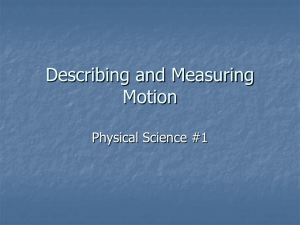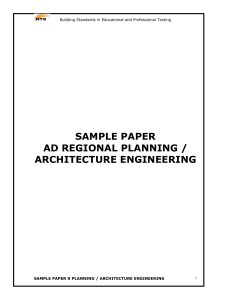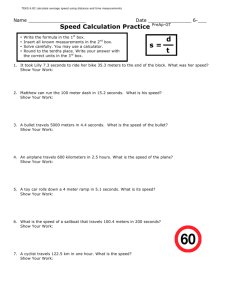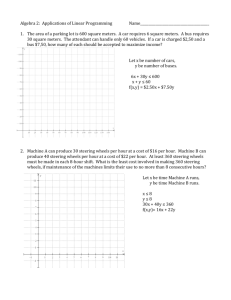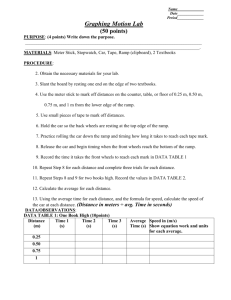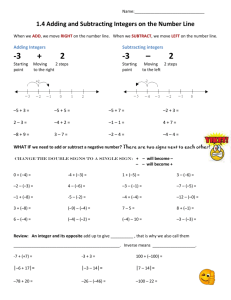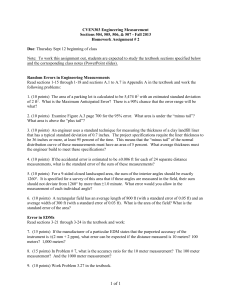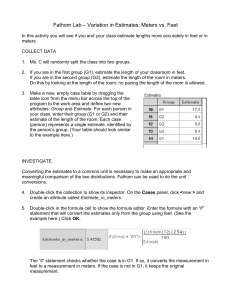Constant vs. Accelerated Motion lab
advertisement
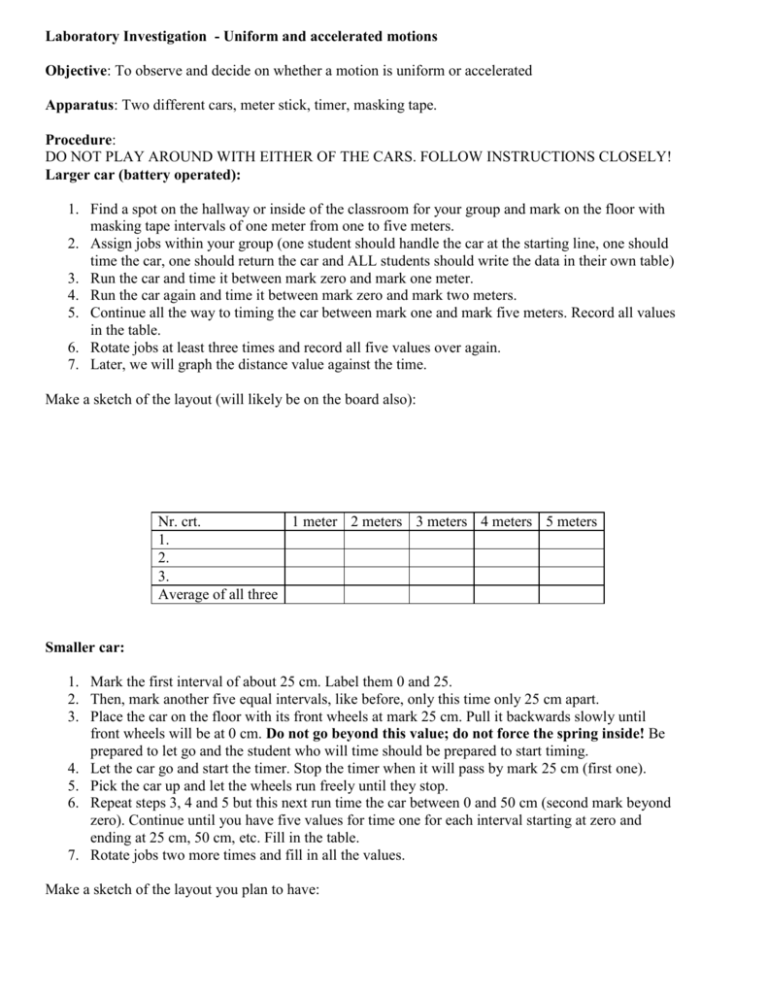
Laboratory Investigation - Uniform and accelerated motions Objective: To observe and decide on whether a motion is uniform or accelerated Apparatus: Two different cars, meter stick, timer, masking tape. Procedure: DO NOT PLAY AROUND WITH EITHER OF THE CARS. FOLLOW INSTRUCTIONS CLOSELY! Larger car (battery operated): 1. Find a spot on the hallway or inside of the classroom for your group and mark on the floor with masking tape intervals of one meter from one to five meters. 2. Assign jobs within your group (one student should handle the car at the starting line, one should time the car, one should return the car and ALL students should write the data in their own table) 3. Run the car and time it between mark zero and mark one meter. 4. Run the car again and time it between mark zero and mark two meters. 5. Continue all the way to timing the car between mark one and mark five meters. Record all values in the table. 6. Rotate jobs at least three times and record all five values over again. 7. Later, we will graph the distance value against the time. Make a sketch of the layout (will likely be on the board also): Nr. crt. 1 meter 2 meters 3 meters 4 meters 5 meters 1. 2. 3. Average of all three Smaller car: 1. Mark the first interval of about 25 cm. Label them 0 and 25. 2. Then, mark another five equal intervals, like before, only this time only 25 cm apart. 3. Place the car on the floor with its front wheels at mark 25 cm. Pull it backwards slowly until front wheels will be at 0 cm. Do not go beyond this value; do not force the spring inside! Be prepared to let go and the student who will time should be prepared to start timing. 4. Let the car go and start the timer. Stop the timer when it will pass by mark 25 cm (first one). 5. Pick the car up and let the wheels run freely until they stop. 6. Repeat steps 3, 4 and 5 but this next run time the car between 0 and 50 cm (second mark beyond zero). Continue until you have five values for time one for each interval starting at zero and ending at 25 cm, 50 cm, etc. Fill in the table. 7. Rotate jobs two more times and fill in all the values. Make a sketch of the layout you plan to have: Nr. crt. 25 cm 50 cm 75 cm 100 cm 125 cm 1. 2. 3. Average of all three Graphs: 1. On separate graphs graph the two motions (distance-average value versus the corresponding time). Make sure the scales are chosen accordingly (as explained in class) – the graph should be as big as the page; label axes, etc. 2. If the points in your graph line up, fit a straight line through or as close as possible to all of them. Do not join the points with segments! 3. If the points in the graph do not seem to be along a line; draw a smooth curve which passes close to all the points. Do not join the points with segments! Analysis: Answer the following questions (we will also discuss most of them in class): 1. Which of the cars had constant speed? Why? What’s special about the constant speed graph? 2. If you have obtained a line graph, calculate its slope (rise over run). 3. What units might the slope have? Why? (Hint: look at the labels of your graph) 4. What might the slope represent? 5. If the graph does not look straight, could you explain what the car did and how this corresponds to the graph you obtained? 6. On the graph (the one that’s not a straight line), point out a place where the car had the largest speed. How did you find that spot? 7. What is an error? List the significant sources of error this lab. A full lab report is required!


